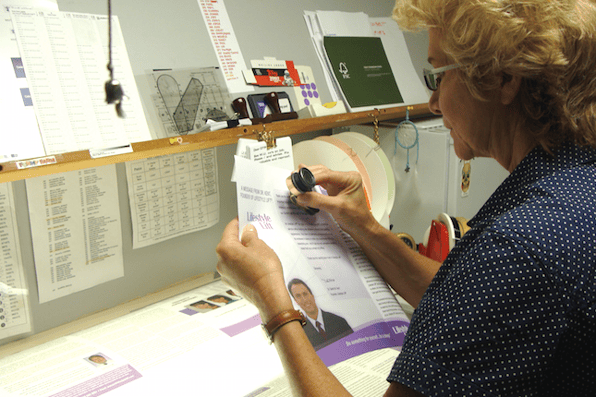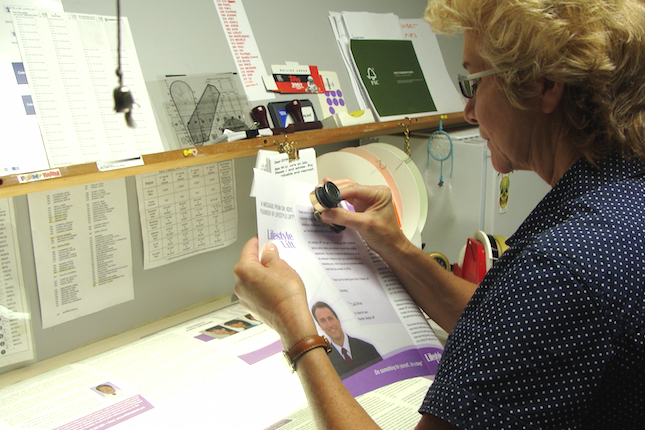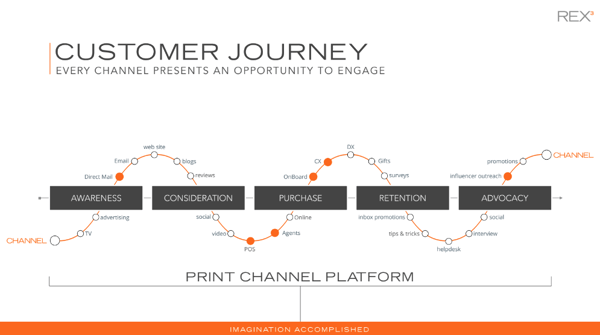Are You Losing Your Print Marketing Touch?


When Stacey came in to go on press, she told us she’d stick around to review her Epson proofs and check on her PMS colors. She didn’t care that she’d be there after hours. She knew the stock she had selected would make a strong emotional connection with her audience as part of her first automated print campaign.
Clearly Stacey knows print. But while other execs rave about their digital marketing analytics, a bigger bunch loses the offline marketing touch.
It’s true.
Clicks, likes, shares, and opens are getting a lot of hype, while the customer journey derails into a one-way, online approach.
We’re not kidding.
As a print automation and direct mail facility, we’re always left wondering why marketers are increasingly unsure about how to use print in today’s digital era. It’s become almost a foreign topic of discussion with terms like saddle stitched, wafer sealed, flat size and spot UV, getting frowns or question marks all over. Meanwhile, this could be impacting sales.
Before we show you why, we’ll reiterate that this was not the case 15 or 20 years ago. In fact, we now find ourselves helping “new age” marketers grasp the basics of offline marketing, including everything from how to quote a printing project to carrying out a successful direct mail marketing program that’s tied to digital efforts.
We’re not being extremists. Not all marketers have ditched offline marketing to elope with Facebook Ads and Google AdWords. We can attest to that through our continued growth as commercial printers and mailing specialists, but there’s something to say about how print can tie into your digital marketing plan in a way that can absolutely be measured. Knowing how to do that is an art we’ve come to dominate through our more than 60 years of experience, dabbling with variable data software tools and trigger-based automated print systems. And since it’s completely possible to track it’s performance, we still think print’s place in the digital marketing mix is not well understood. There doesn’t seem to be best practices to follow and no one is really converging both techniques in a way that’s practical for the “new age” marketer to implement. If you’re actively incorporating print into your digital marketing mix, please comment below and let’s start a discussion.
Meet the Customer Journey

Inspired by the inbound marketing methodology, the customer journey we’ve mapped above could resemble your customer journey too; at least bits and pieces of it.
Across these four stages (Awareness, Consideration, Purchase, Retention, and Advocacy) is an opportunity to touch someone with print. Every point of contact could create mindshare, build loyalty, and generate repeat sales with a humanized approach. The objective at each phase should be specific to your business needs and outlined using data-driven marketing techniques. The entire spectrum though is what we call the print channel platform. This platform, if carefully designed, could lead to measurable, automated print solutions that support your overall sales process. The keyword here is measurable.

Designing a Just-in-time (JIT) Print and Mail Workflow
A common mistake in managing print communications is that they are reactive or second thought. Print projects aren’t proactive in nature, and therefore, generate little return. They're not driven by a customer journey and they’re not triggered with workflows, compared to digital marketing automation, for instance. We admit this isn’t the case across the board.
There are marketers out there that are on some sort of print automation software. These companies, in sharp contrast, are proactive do interlace print into their sales and customer creation journeys. It's so well done they can predict an influence in sales, justifying the printing, mailing, and fulfillment costs associated with offline communications. Again, the trick is to implement triggers that can be measured to reduce costs and effectively use print to add value.
Take a look at onboarding section shortly after the Purchase stage.
Think about the tools and printed pieces you can create to celebrate a new customer. Dealerships and private universities have nailed this down pretty well. But are you missing out on this opportunity? Or perhaps you already have something setup, but it’s completely digitally versus humanized.
Just think about how can you can use print to create a meaningful connection offline. That’s where a well thought-out customer journey comes in to create perceived value, stimulate referrals, and even increase the lifetime value of that customer. Not to mention all of the competitive advantages that come with incorporating unique pieces that your competitors probably don’t have in place. That’s the kind of thinking that will increase the ROI of the automated print workflows that deliver your marketing materials.
For best practices and tips on how to incorporate the print channel platform into your marketing communications plan, please contact us and we’d be more than happy to share what we’ve seen work best.
